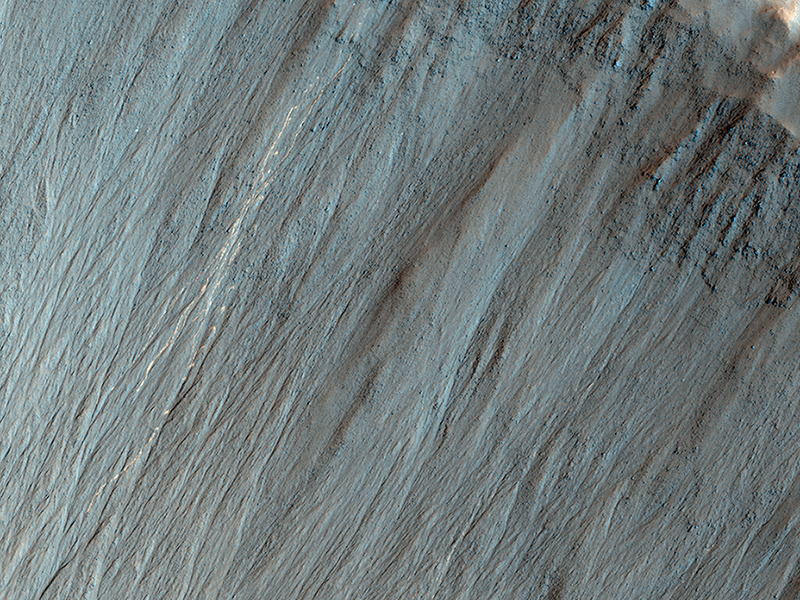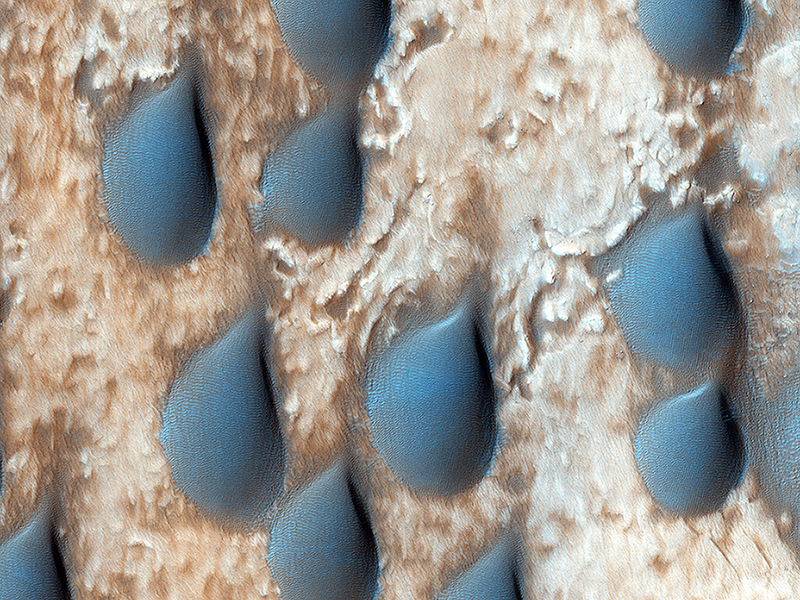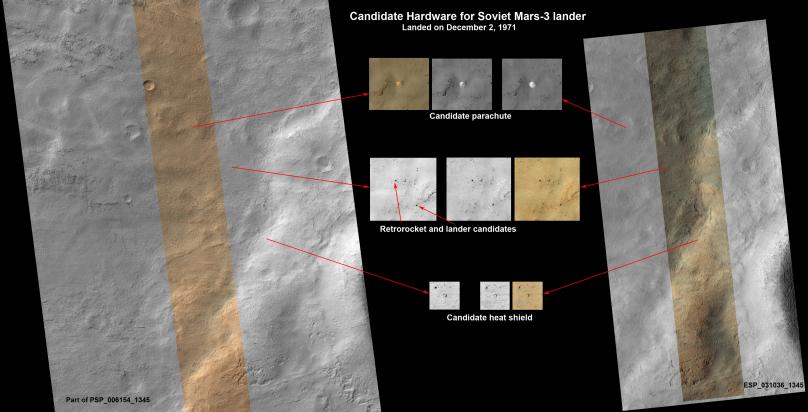HiRISE Updates (2013 Apr 10)
Posted: Wed Apr 10, 2013 8:41 pm
HiRISE Science Team wrote:Megabreccia on the Floor of an Impact Crater (ESP_023099_1545) (video)
"Megabreccia" is a term we use to describe jumbled, fragmented blocks of rock larger than 1 meter across, in a matrix of finer-grained materials. It's the result of energetic processes, typically from an impact event.
This image was acquired by HiRISE only in the narrow color strip, as a ridealong with a CRISM target, since HiRISE had previously imaged this location.
Ethan Schaefer wrote:Ridges and Grooves That Wave and Buckle on a Valley Floor (ESP_026414_2205) (video)
Long linear ridges and grooves curve, wave, and buckle across most of this image. Here, as elsewhere on Mars, these linear ridges and grooves fill a valley floor, hence their name, “lineated valley fill.”
Because these features are only found in valleys in the middle latitudes (30 to 60 degrees) of the Northern and Southern hemispheres, scientists had long suspected that they were associated with some ancient climate that had prevailed in that latitudinal band. Based on peering beneath the surface using radar, scientists now think that lineated valley fill is probably merely a rocky veneer atop a glacier of nearly pure ice! The rocks that make up the linear ridges and grooves were oriented by the ancient flow of the glacier underneath.
Alfred McEwen wrote:Bright Tracks from Bouncing and Rolling Boulders (ESP_031103_1405) (video)
This image shows a well-preserved impact crater. A closeup view highlights distinctive bright lines and spots on the steep slope on the north side.
HiRISE imaged this crater 5 years ago (2.6 Mars years ago), in March 2008, and no such pattern was visible. The discontinuous bright spots indicate bouncing, so we interpret these features as due to boulders bouncing and rolling down the slope.
Where did the boulders come from? Maybe they fell off of the steep upper cliffs of the crater, although we don't see any new bright features there that point to the source. Maybe the rocks were ejecta from a new impact event somewhere nearby.
Why are the trails bright? Perhaps the shallow subsurface soil here is generally brighter than the surface soil, as revealed by the Spirit rover in a part of Gusev Crater. It can't be bright from ice because this is a warm equator-facing slope seen in the summer.
Alfred McEwen wrote:Raindrops of Sand in Copernicus Crater (ESP_031221_1315) (video)
The dark features here look like raindrops, but are actually sand dunes. This spot was targeted by CRISM because the dunes are rich in the mineral olivine.
Olivine-rich dunes are very rare on Earth, as olivine rapidly weathers to clays in a wet environment. There is also olivine-rich bedrock in the central peaks of Copernicus Crater on the Moon.
There is only a handful of very important scientists, like Nicolaus Copernicus (1473-1543) who have craters named after them on both Mars and the Moon.
Credit: NASA/JPL/University of Arizona
<< Previous HiRISE Update




